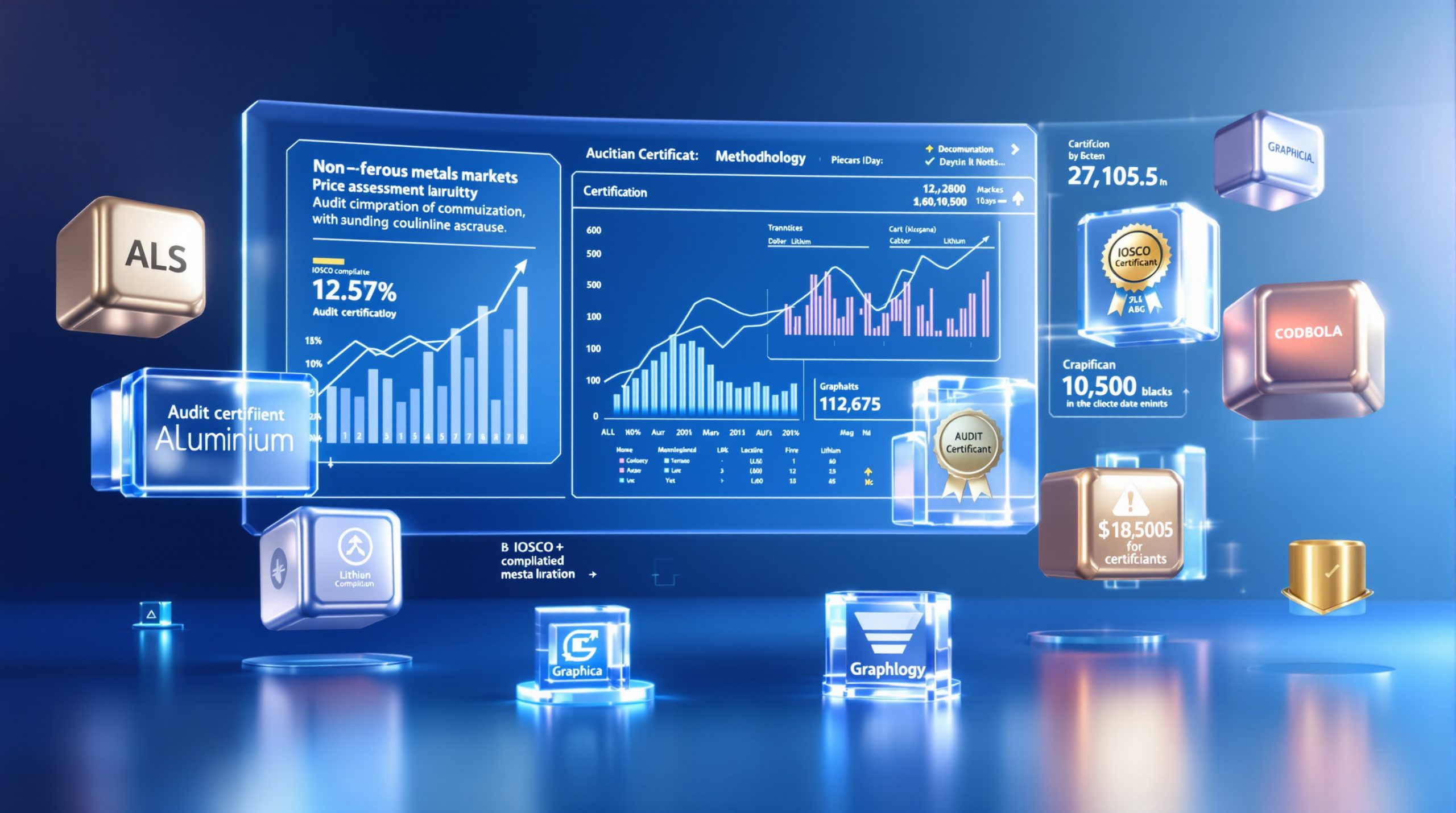Aluminum Market Trends: Understanding Price Weakening and Market Outlook
In recent trading sessions, aluminum prices have shown consistent weakness across global markets. This comprehensive analysis explores the driving factors behind price declines, examines market responses across different aluminum segments, and provides actionable insights for industry participants navigating these challenging conditions.
What's Causing Aluminum Prices to Weaken?
The aluminum market is experiencing significant pressure from multiple directions, creating a perfect storm for price weakness that industry participants are carefully monitoring.
Global Supply-Demand Imbalance
Primary aluminum spot prices have declined notably, with SMM A00 aluminum closing at 20,780 yuan/mt, representing a 100 yuan/mt drop in recent trading. This price weakness comes amid growing concerns about market oversupply, as production levels remain robust despite clear signals of weakening demand.
"The persistent production growth coupled with sluggish consumption has created a fundamental imbalance in the market," notes industry analyst Chen Wei from SMM Research. "This supply-demand gap continues to exert downward pressure on prices."
The downstream manufacturing sector has adopted increasingly cautious procurement strategies, with many buyers shifting to just-in-time purchasing models to minimize inventory risk. This behavior further contributes to the sluggish trading activity observed across aluminum markets, as buyers delay purchases in anticipation of potential further price declines.
Social inventory data confirms this trend, with secondary aluminum alloy ingot stocks increasing by 238 metric tons to reach 19,761 mt across key trading hubs including Foshan, Ningbo, and Wuxi. This inventory build-up serves as a visible indicator of the consumption challenges facing the market.
Macroeconomic Factors
Beyond direct supply-demand dynamics, broader economic forces are amplifying aluminum's price weakness:
- Currency fluctuations: The strengthening US dollar has made aluminum more expensive in local currency terms for many importers, dampening international demand.
- Manufacturing slowdown: Key aluminum-consuming sectors, particularly construction and automotive, are experiencing reduced activity levels as high interest rates continue to impact capital-intensive industries.
- Geopolitical tensions: Ongoing trade disputes and regional conflicts have created uncertainty in commodity markets, encouraging cautious positioning by major players.
- Seasonal patterns: Traditional summer slowdowns in construction and manufacturing are further magnifying the typical seasonal lull in aluminum demand.
Expert Insight: "What we're seeing is not just typical market cyclicality but a confluence of macroeconomic headwinds that are testing the resilience of aluminum prices. Cost support is preventing a free-fall, but the path of least resistance remains downward in the near term." – SMM Metals Analysis Team
How Are Secondary Aluminum Markets Responding?
Secondary aluminum markets present an interesting case study in market psychology and price resistance during challenging conditions.
Market Sentiment and Pricing Strategies
Despite the clear weakness in primary aluminum prices, secondary aluminum markets have shown remarkable resilience. Traders in this segment have generally adopted a strong wait-and-see attitude, demonstrating limited willingness to adjust prices downward despite the bearish signals from primary aluminum.
This resistance is evident in SMM ADC12 pricing, which has maintained stability at 20,000-20,200 yuan/mt despite the 100 yuan/mt decline in primary aluminum. Industry analysts attribute this stability to several factors:
- Production cost floors: Secondary producers face relatively stable input costs that limit downside pricing flexibility.
- Contract structures: Many secondary aluminum sales operate under longer-term agreements that buffer short-term market fluctuations.
- Market anticipation: Some traders are positioning for potential supply tightness later in the quarter.
- Theoretical premium: The ADC12 spot price currently maintains a premium of approximately 330 yuan/mt over futures contracts, reflecting continued physical market support.
Inventory Dynamics
The inventory situation provides additional context for secondary aluminum market behavior. Social inventory of secondary aluminum alloy ingots increased by 238 mt to reach a total of 19,761 mt across key trading hubs Foshan, Ningbo, and Wuxi.
This inventory build-up serves as a leading indicator of consumption challenges, with accumulating stocks signaling that production continues to outpace current demand. The stockpiling behavior creates a complex market psychology:
- Producers maintain production to cover fixed costs
- Traders hold inventory in anticipation of potential price rebounds
- Consumers delay purchases expecting further price weakness
- The resulting standoff creates the current rangebound trading pattern
The table below illustrates the current inventory distribution across major trading centers:
| Trading Hub | Current Inventory (mt) | Weekly Change (mt) | Monthly Change (%) |
|---|---|---|---|
| Foshan | 7,845 | +112 | +3.8% |
| Ningbo | 6,290 | +85 | +2.9% |
| Wuxi | 5,626 | +41 | +1.5% |
| Total | 19,761 | +238 | +2.7% |
What's Happening in the Aluminum Scrap Sector?
The aluminum scrap market demonstrates unique dynamics compared to primary and secondary aluminum, with its own supply-demand factors creating pricing patterns that sometimes diverge from broader market trends.
Price Movements and Supply Conditions
Current price quotations for key scrap categories reveal market conditions:
- Baled UBC (Used Beverage Cans): 15,400-15,900 yuan/mt (tax excluded)
- Shredded aluminum tense scrap: 15,800-17,300 yuan/mt (tax excluded)
These price ranges reflect both the regional variations in the scrap market and the quality differentials that significantly impact pricing. The relatively wide quotation ranges highlight the fragmented nature of the scrap supply chain, where collection networks, processing capabilities, and transportation costs create significant regional differences.
Unlike the primary aluminum market, certain scrap categories are experiencing supply tightness that provides price support. This is particularly evident with shredded aluminum tense scrap, where collection challenges and critical raw materials trends have constrained availability despite weakening end-user demand.
SMM analysts project that shredded aluminum tense scrap will fluctuate within the range of 15,800-17,400 yuan/mt in the near term, with tight supply conditions preventing significant price erosion despite the broader market weakness.
Market Resilience Factors
The scrap aluminum sector demonstrates notable resilience against the headwinds affecting primary aluminum, supported by several structural factors:
- Supply-side constraints: Collection networks remain disrupted in several regions, limiting scrap availability.
- Cost advantages: The energy cost differential between primary and recycled aluminum production continues to favor scrap.
- Environmental policies: Regulatory emphasis on recycled content requirements supports scrap demand.
- Flexible production: Scrap processors can adjust operations more nimbly than primary smelters.
However, market participants note that while scrap prices show greater stability, they cannot remain completely divorced from primary market trends over extended periods. The correlation between scrap and primary aluminum prices typically reasserts over time, though often with a lag effect.
How Are Futures Markets Performing?
Futures markets provide critical forward visibility for industry participants, with contract performance serving as a key indicator of market expectations and sentiment.
Contract Performance Analysis
The most-traded cast aluminum alloy contract (AD2511) closed at 19,795 yuan/mt in the latest session, down just 5 yuan/mt (0.03%) from the previous trading day. This minimal movement suggests the market has entered a consolidation phase after recent declines.
Detailed contract performance metrics reveal:
- Trading range: 19,720-19,820 yuan/mt (relatively narrow 100 yuan/mt range)
- Opening price: 19,785 yuan/mt
- Trading volume: 979 lots
- Open interest: 8,464 lots
Position analysis indicates bears dominated recent activity, with open interest increases primarily coming from new short positions. This positioning suggests continued caution among market participants and potential expectation of further price weakness.
Technical Indicators
The technical picture for aluminum futures suggests a market in consolidation after the recent downtrend. The narrow trading range (19,720-19,820 yuan/mt) represents approximately 0.5% of the contract value, indicating limited volatility and potentially a period of price discovery.
Key technical factors to monitor include:
- Support levels: Major support around 19,700 yuan/mt based on recent activity
- Resistance levels: Overhead resistance at 20,000 yuan/mt (psychological level)
- Volume patterns: Decreasing volume during consolidation periods often precedes directional moves
- Moving averages: Prices remain below key moving averages, confirming the bearish technical structure
The futures market currently provides an important forward visibility function for industry participants, allowing both producers and consumers to hedge price risk during this period of uncertainty. The current consolidation phase suggests the market is seeking equilibrium after recent declines.
What's the Situation in International Markets?
The international aluminum market presents a complex picture with important implications for global trade flows and regional price arbitrage.
Import-Export Dynamics
Recent import data shows ADC12 CIF offers have risen slightly to $2,450-2,480/mt, creating a challenging situation for importers as domestic prices weaken. Import spot prices have dropped by approximately 100 yuan/mt to around 19,200 yuan/mt, effectively widening import losses.
This divergence between import costs and domestic prices is disrupting normal trade patterns, with importers facing increasingly unfavorable economics. The situation highlights the complex interplay between global aluminum markets, where regional price differentials can significantly impact trade flows.
In the Thai market, a key regional supplier, ADC12 quotations (tax excluded) have clustered around THB 82-83/kg, reflecting relatively stable pricing in that market despite the pressure observed elsewhere.
Arbitrage Opportunities and Challenges
The current market conditions present significant challenges for cross-border aluminum trade:
- Price differentials: The gap between Chinese domestic prices and import parity prices has widened, creating unfavorable import economics.
- Regional variations: Price movements are not uniform across Asian markets, creating potential arbitrage opportunities for traders who can navigate logistical challenges.
- Logistics considerations: Shipping delays and container availability issues continue to complicate international aluminum trade.
- Currency factors: Exchange rate movements between the USD, CNY, and THB add another layer of complexity to cross-border transactions.
A comparative analysis of key regional markets reveals the following price relationships:
| Market | ADC12 Price (USD/mt equivalent) | Weekly Change | Import Viability |
|---|---|---|---|
| China Domestic | ~$2,835 (19,800 yuan/mt) | ▼ | Reference |
| Import CIF | $2,450-2,480 | ▲ | Negative margin |
| Thailand | ~$2,360 (82.5 THB/kg) | ◄► | Viable before duties |
| Japan | ~$2,520 | ▼ | Breakeven |
What's the Short-Term Outlook for ADC12 Aluminum Alloy?
The near-term outlook for the ADC12 aluminum alloy market suggests continued range-bound trading as opposing forces maintain equilibrium between support and resistance levels.
Price Projection Factors
Several key factors will determine price direction in the coming weeks:
-
Cost support: Production costs establish a relatively firm price floor, with most producers facing similar input cost structures. The lowest-cost producers begin to face margin pressure around 19,800 yuan/mt.
-
Weak terminal demand: Order volumes from end-users remain subdued, with automotive and durable goods manufacturers reporting cautious production forecasts. This weak demand effectively caps significant upside potential.
-
Off-season impacts: The traditional summer slowdown is intensifying, further dampening consumption patterns across aluminum-consuming industries. Historical patterns suggest this seasonal effect typically persists through early August.
-
Inventory levels: The recent inventory build (+238 mt) indicates consumption challenges, but the rate of increase remains moderate compared to previous down-cycles.
Based on these factors, SMM analysts project ADC12 prices will remain rangebound between 19,800-20,200 yuan/mt in the near term, with temporary fluctuations possible but sustained breakouts unlikely without significant changes to the fundamental picture.
Demand Forecast
The demand outlook remains cautious across key consuming sectors:
- Automotive: Production schedules remain conservative with limited signals for significant near-term increases.
- Consumer durables: Appliance and electronics manufacturers report steady but unspectacular order books.
- Construction: Seasonal factors limit major project initiations during summer months.
- Industrial equipment: Capital expenditure restraint continues to impact machinery production.
This persistent weak demand environment is expected to continue through July, with downstream enterprises maintaining their cautious purchasing behavior. Early signals suggest minimal consumption improvement before the traditional post-summer recovery period begins in late August.
Market Perspective: "The current price weakness reflects a classic mid-cycle adjustment rather than a structural collapse. Cost support is preventing significant further declines, while demand constraints are limiting upside. We expect rangebound trading to continue until clearer directional signals emerge from end-use markets." – SMM Metals Analysis Team
How Does This Affect Different Market Participants?
The current aluminum market conditions create distinctly different challenges and opportunities for various industry participants across the value chain.
Implications for Producers
Primary and secondary aluminum producers face a complex operating environment requiring strategic adjustments:
- Production cost management becomes increasingly critical, with energy efficiency, raw material sourcing, and operational excellence determining competitive positioning.
- Inventory management strategies require careful calibration to balance working capital efficiency against ability to respond to potential demand improvements.
- Pricing power limitations necessitate a focus on value-added services, product quality, and customer relationships to maintain margins.
- Strategic positioning for eventual market recovery requires maintaining operational readiness while managing costs during the current weak period.
For primary producers specifically, decisions around production curtailment must balance short-term financial considerations against the significant costs associated with smelter restarts. Secondary producers typically enjoy greater operational flexibility but face margin compression when scrap discounts to primary narrow.
Considerations for Consumers
For aluminum consumers, the current market presents both opportunities and risks:
- Strategic purchasing opportunities exist to secure favorable pricing through longer-term agreements or increased spot buying during price dips.
- Inventory optimization becomes increasingly important, balancing just-in-time efficiency against potential supply disruption risks.
- Negotiation leverage has shifted toward buyers in the current environment, creating opportunities to secure improved terms, quality specifications, or service levels.
- Risk management considerations should include potential supply chain disruptions if producers begin to rationalize capacity or adjust product offerings.
Larger consumers with sophisticated procurement operations can utilize the current market conditions to establish advantageous long-term supply arrangements, while smaller buyers may benefit from increased spot market liquidity and competitive pricing from distributors seeking volume.
FAQ About Aluminum Price Weakening
Why are aluminum prices weakening despite production costs?
Market forces including oversupply concerns, weak downstream demand, and macroeconomic factors are currently outweighing production cost considerations. While production costs establish a theoretical floor price, markets can temporarily trade below full-cost levels during periods of significant imbalance. The current inventory build-up (+238 mt in recent data) confirms that production continues to exceed consumption, creating downward price pressure despite relatively stable input costs.
How does the futures market affect physical aluminum prices?
Futures markets influence physical aluminum prices through several mechanisms:
- Price discovery: Futures trading provides transparent, forward price information that guides physical market negotiations.
- Hedging activity: Producer and consumer hedging creates liquidity and price signals that influence physical market sentiment.
- Speculative positioning: Non-commercial traders can amplify price trends, impacting market psychology.
- Contango/backwardation structures: The relationship between near-term and forward prices influences physical market storage decisions and inventory management.
The current bearish positioning in futures contracts (bears dominating position increases) signals continued caution about near-term price prospects, influencing physical market sentiment and pricing decisions.
What factors could reverse the current price weakness?
Several potential catalysts could shift the market direction:
- Production cuts: Significant curtailments by major producers would rebalance the supply-demand equation.
- Demand improvement: Unexpected strengthening in automotive, construction, or packaging sectors would absorb excess inventory.
- Supply disruptions: Energy constraints, labor actions, or technical issues at major smelters could create supply tightness.
- Cost inflation: Significant increases in power costs, alumina prices, or carbon allowances could lift the production cost floor.
- Policy interventions: Infrastructure spending programs, green energy initiatives, or iron ore trends analysis could boost aluminum demand.
The market typically responds rapidly to clear signals of these catalysts, with pricing often anticipating fundamental changes before they fully materialize.
How do secondary aluminum prices typically correlate with primary aluminum?
Secondary aluminum prices generally follow primary aluminum price trends but with several important differences:
- Lag effect: Secondary prices typically respond to primary price movements with a delay of 1-2 weeks.
- Dampened volatility: Secondary prices usually exhibit less dramatic price swings than primary aluminum.
- Different cost structure: While primary aluminum costs are dominated by power, alumina, and carbon, secondary production costs center on scrap procurement, processing, and alloying materials.
- Distinct supply-demand dynamics: The recycling market operates with different collection
Curious About Real-Time Mineral Discovery Alerts?
Stay ahead of the market with Discovery Alert's proprietary Discovery IQ model that provides instant notifications on significant ASX mineral discoveries, delivering actionable investment insights before the broader market reacts. Visit our discoveries page to see historic returns from major mineral finds and start your 30-day free trial today.




